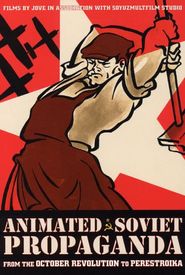Efim Abramovich Gamburg is a renowned Soviet and Russian film director, widely recognized for his outstanding contributions to the world of animation. As an Honored Artist of the RSFSR, he has been bestowed with numerous accolades, including the prestigious Order of the Red Star and various medals.
Prior to his illustrious career in animation, Gamburg served as a member of the World War II effort. His remarkable military service and subsequent artistic endeavors have solidified his status as a respected figure in the Russian film industry.
Gamburg's academic background is rooted in the Moscow Pedagogical Institute, where he graduated from the Faculty of Graphic Arts. This foundation in visual arts laid the groundwork for his future success in the world of animation.
In 1955, Gamburg began his professional journey at the renowned Soyuzmultfilm movie studio, initially working as an animator. He made his directorial debut in 1964 with the magazine film "Fuse" (1962),which marked the beginning of his illustrious career.
Gamburg's impressive body of work includes the beloved animated musical cartoon "Blue Puppy" (1976),based on the timeless tale by Gyula Urbán. Additionally, he created the charming cartoon "Pup in Boots" (1981),utilizing traditional "classic" hand-drawn animation techniques inspired by Alexandre Dumas' iconic novel "The Three Musketeers".
In 1982, Gamburg made history by producing the first animated film in the USSR to utilize computer graphics, "Paradoksy v stile rok" (1982). This groundbreaking achievement cemented his position as a pioneer in the field of computer-generated animation.
In 1990, Gamburg founded and headed the studio "Hamburg Account" (later renamed "Renaissance" in 1991). This studio has since become a hub for innovative and imaginative animation, further solidifying Gamburg's legacy as a visionary in the world of Russian animation.




















